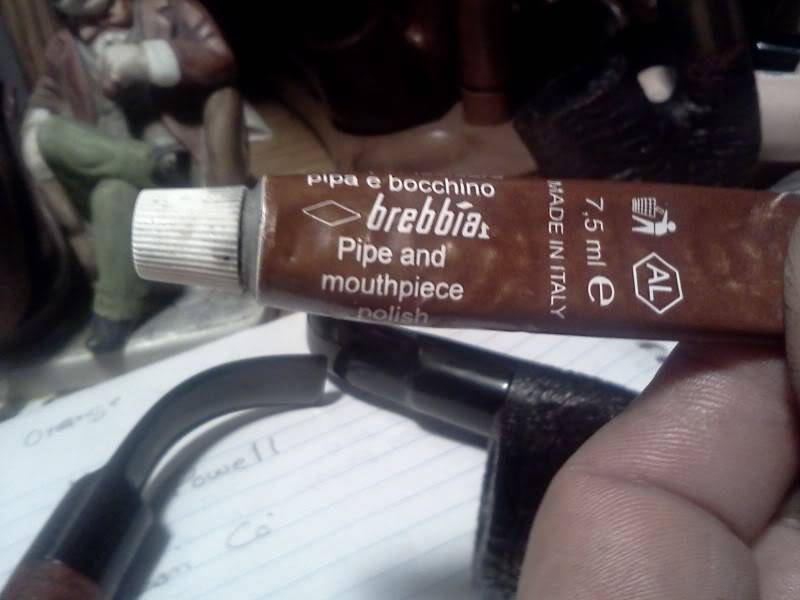I prefer a burnished look to "better than new." I've found that brisk rubbing with a washed and air-dryed (i.e., rough) golf towel does a good job for mild discoloration. Light steel wool is needed on harder cases. After the rubrubrub, I dip a fingertip in mineral oil and apply dots of it to the vulcanite stem. Then I just rub the stem until the mineral oil is evenly spread. Wipe off excess after a few hours (There should be hardly any excess)
Mineral oil is an antioxidant, you can also use it on knife blades with high carbon content.
A puzzle for your thoughts:
At the end of October, my fair state was hit with a freak storm that wiped out electricity (and heat, in my case) for as much as two weeks. After four days of no heat and the missus getting a little cranky, I decided screw this and we took a nice hotel room on the Maine coast for the duration. 'Pon our return I noticed the vulcanite stems on my briars were, not just discolored, but almost had an olive moss on the stems, especially on those exposed to sunlight. After restoring the family manse to some resemblance of its former glory, I took light steel wool to the affected pipe stems. The job was a royal pain and produced quantities of olive colored dust. After rubbing and applying dabs of mineral oil they now look okay.
I find it hard to believe that the sudden increase of oxidation in the vulcanite stems was due to being in an unheated house for 1 1/2 weeks. At night the indoor temp was in the high 20s and it didn't warm up much during the day. I don't have any other explanation. Any opinions from the best and brightest out there?
Caveat: All the affected pipes (maybe a doz) were Mountbattens, Petes, Savs, Jobeys at least 20 years old, some twice that.

